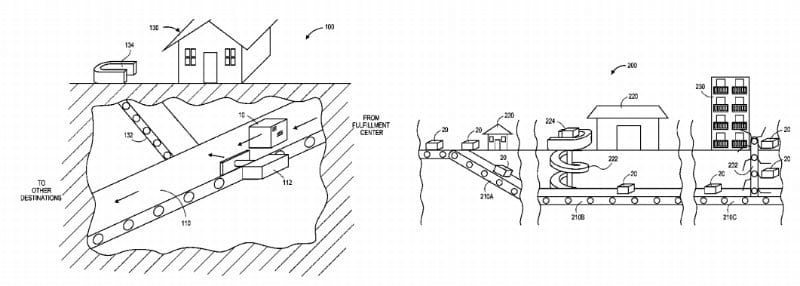Boring Freight
Elon Musk is a man of many innovative ideas. Most of them are consumer oriented, but all have great logistics potential. His innovations and ideas focus on two main areas: transportation and sustainable energy. Best known example is probably the Tesla, which is a combination of both. A 100% electrical vehicle. It has been a major push forward for the acceptance of electrical vehicles by the general public.
His latest idea, which he got while being stuck in traffic in LA, has huge logistics potential if you ask me. I also love the name: The Boring Company. The video below explains it:
I’m not sure if people would enjoy moving through tunnels for long distances. I see much more potential for freight and deliveries, especially in dense urban areas. Tunnels would be a great way to distribute goods to (mini) hubs in the city, from where small(er) electric vehicles or bikes can do the last mile. This will work even better when we have self-driving delivery vehicles for that.
Moles in the UK
Moving Freight underground is not a new idea, as you can read at the end of this post. And Musk is not the only one seeing the benefits of tunnels. Take for example Mole Solutions in the UK, who have built a test track of their own tunneling solution. They see possibilities for different industries. For mining companies they can move bulk, for retail companies they can move pallets in and out of cities, and they also have a solution for moving shipping containers. You can see their urban delivery concept in this video:
Swiss Want to go Underground
And on the European mainland there is a Swiss company working on a freight tunneling concept. At the start of 2016 Cargo Sous Terrain (under ground) presented a feasibility study for a 66 km long tunnel connecting 3 cities / logistics centers in Switzerland (Soluthurn, Bern, and Zurich). A tunneling solution makes sense for Switzerland, as the mountainous terrain doesn’t allow for unlimited expansions of their infrastructure. The tunnels come at a cost. 66km of tunnel, 6 meters wide, 50 meters under the ground will set you back about 3.4 billion dollars. Unmanned vehicles would move at a speed of 30km an hour, powered and steered by electromagnetic induction. A video of the concept:
Aaaaaaaaaaand Amazon. Of Course.
And, as with any logistics innovation, Amazon has ideas about this as well. They were recently granted a patent on a system using dedicated tunnels to deliver and distribute goods and packages. From vendors to distribution centers to customers and back.
History Repeats
The technology that Musk is using to create his tunnels may be new, but the idea certainly isn’t (for freight that is). Take for example these two companies, that tried something similar at the start of the 20th Century:
The Chicago Tunnel Company built a 2 ft (610 mm) narrow gauge railway freight tunnel network under the downtown of the city of Chicago. This was regulated by the Interstate Commerce Commission as an interurban despite the fact that it operated entirely under central Chicago, did not carry passengers, and was entirely underground. Source:Wikipedia
The tunnel system was a leftover from the construction of the utility tunnels carrying telephone cables. It served both companies and the public. There actually were 5 pickup and drop off points for packages for private people. As time went by the company struggled to operate on a profit, and eventually the Chicago Tunnel Company went bankrupt in 1959.
A similar project in the UK, inspired by the Chicago Tunnel Company, lasted much longer. It operated from 1927 until 2003
The Post Office Railway, also known as Mail Rail, is a 2 ft (610 mm) narrow gauge, driverless underground railway in London that was built by the Post Office with assistance from the Underground Electric Railways Company of London, to move mail between sorting offices.
It was shut down, as moving freight through the tunnel system was reportedly 3 to 6 times more expensive than moving it with regular trucks. Maybe the fact that it was only used by the postal company worked against it. Interesting difference with the Chicago project is the fact that it was driverless.
Is Freight Going Underground?
I believe Freight will go underground and people will stay above ground. We will have to wait and see which of the initiatives above will become an actual mode of transport. I also think we need to keep an eye on the various Hyperloop projects. They would combine well with the tunnels. Moving Freight over distances at high speed. Shall we count a tube above ground as a tunnel as well?






